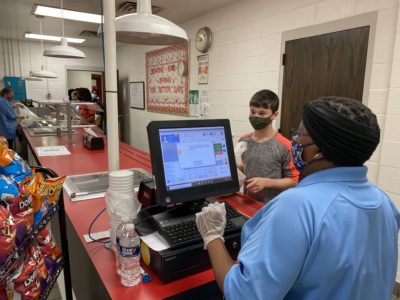
This National Farm to School Month, students across North Carolina will eat locally grown products in school meals, engage in educational activities about agriculture and nutrition, and take part in school gardening experiences.
According to the 2023 USDA Farm to School Census, 59% of school nutrition departments in N.C. served local foods in their schools, ranking 34th out of 50 states, and 10% of total food costs came from local products, ranking 41st out of 50 states.
School nutrition directors often want to purchase more local products, and farmers often want to sell to local school districts, but challenges to purchasing local food remain.
![]() Sign up for the EdWeekly, a Friday roundup of the most important education news of the week.
Sign up for the EdWeekly, a Friday roundup of the most important education news of the week.
Why does purchasing local food for school meals matter?
During the 2023-24 school year, North Carolina schools served more than 200 million breakfasts and lunches. Collectively, schools have immense purchasing power — buying local food can have significant impacts on the local agricultural economy and the students receiving meals.
According to an analysis from The Rockefeller Foundation, if all U.S. school districts increased procurement from local and regional producers to 30% of all food purchases, 19,552 new local jobs would be created, equivalent to annual local wages of $971 million. Other analyses have found that each dollar invested in farm to school stimulates an additional $0.60-$2.16 of local economic activity.
For farmers, selling to local school districts opens new institutional markets that can provide additional revenue.
“If you’re not financially sustainable, then everything else doesn’t matter — and so the farm to school program has been a very, very key support of what we do,” said Steve Whitmire, owner of Brasstown Beef, which supplies products to many school districts through the N.C. Farm to School Program.
Read more about Farm to School
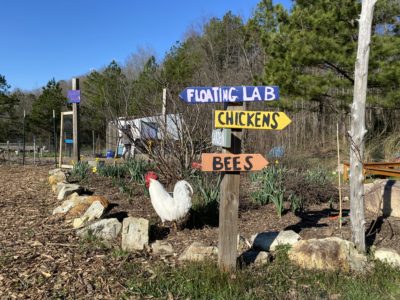
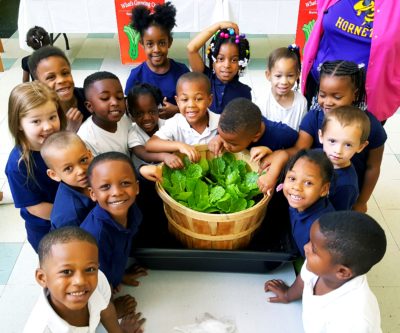

In July 2024, the U.S. Department of Agriculture (USDA) expanded the geographic preference option for school nutrition purchasing, allowing operators to use “locally grown,” “locally raised,” or “locally caught” as a procurement specification when purchasing unprocessed agricultural products. The USDA’s website notes that this change will “ease challenges related to buying local products” and promote school nutrition programs as a market for local producers.
In May 2025, USDA Secretary Brooke L. Rollins released initial policy proposals “aimed at improving the viability and longevity of smaller-scale family farms.” One of those proposals is to provide family farmers with greater access to markets and infrastructure, including plans to “prioritize local farmers in institutional and public food procurement policies.”
“What we see happen all too often is the same large-scale farmers benefit,” said Danielle Raucheisen, director of the Growing Minds program at Appalachian Sustainable Agriculture Project (ASAP). “I think when you can shift more funding to regional models and local farmers, and open up schools and make schools easier market outlets, then farmers are going to benefit so much.”
For students, eating local products in school meals and snacks can improve access to nutritious, high-quality food and increase their interest in topics related to food systems and agriculture.
“Farm to school is a great way for kids to connect the dots,” said Katie Herndon Dawkins, communications manager with the N.C. Alliance for Health, which leads the state’s School Meals for All coalition. “It’s connecting the dots between the land, between animals, between a produce that is grown, between the people that work on the farms, the people that fix their lunch, and their families. All of these dots get connected right there on the lunch tray.”
And, perhaps most importantly to students, local produce often tastes better.
“I know a lot of kids don’t like tomatoes, but you get them a good one, a fresh one — we’re harvesting the day before it goes in their lunches. It tastes better, it’s more nutrient-dense, it’s just better all the way around,” said A.J. Searcy, one of the owners and operators of Charlene’s Garden in Polk County, which provides tomatoes to Polk County Schools.


Challenges and opportunities to increase local food in schools
Based on interviews with school districts, local farmers, and nonprofit organizations, EdNC has identified five types of challenges and opportunities related to purchasing local food for schools: funding, farmer-school district relationships, Good Agricultural Practices (GAP) certification, school nutrition staff capacity, and logistics.
Funding
In a national survey of school nutrition directors conducted by the School Nutrition Association (SNA) in fall 2024, the No. 1 challenge facing school meal programs — selected by nearly 98% of respondents — was food costs.
School nutrition departments, also called school food authorities, operate financially independently of their school districts as self-sustaining, nonprofit enterprises that often operate on very thin margins. The primary source of revenue for these departments are federal reimbursements, which are roughly $4.60 for each free school lunch and $2.46 for each free school breakfast, with lower reimbursements for reduced-price and paid meals. School nutrition departments must use their revenues to cover every cost it takes to serve school meals — including food, supplies, labor, equipment, and other overhead costs.
This makes it difficult to find resources to purchase local products, which can be more expensive than products offered through large national wholesalers or distributors. Raucheisen recalled speaking with a new school nutrition director who really wanted to buy local food, but didn’t have the budget to do so.
“She’s bought in, but she inherited a huge budget deficit,” Raucheisen said. “Buying local just won’t be possible.”

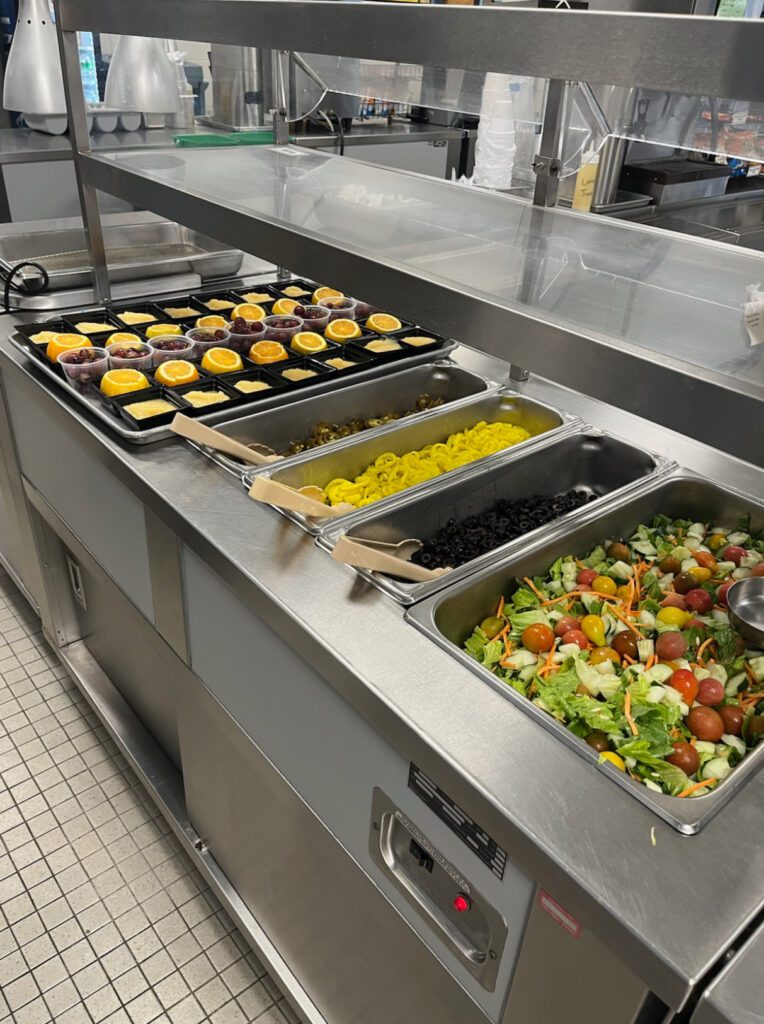
In 2022, North Carolina schools received more than $5 million in federal funds for local food purchases through the Local Food for Schools Cooperative Agreement Program (LFS). However, the USDA canceled the $660 million program in March 2025. North Carolina was set to receive an additional $18.9 million over the next three years.
When he learned of the sudden cancellation of LFS funds, Whitmire said he was “just devastated — personally and financially devastated.”
He estimates that commodity beef sold by the USDA is roughly $1 less per pound than his beef, which is pasture-raised with no antibiotics and no added hormones. The loss of LFS funds makes it even harder for school districts to afford Whitemire’s products.
Separately, the federal Farm to School grant program recently reopened and will provide up to $18 million nationwide to improve access to local foods. The “Make Our Children Healthy Again” report, released in September 2025, notes that the USDA will “improve the farm-to-school grants application process to better connect local producers to schools.”
At least 15 states, not including North Carolina, have developed local food purchasing incentives, which provide additional funding to school nutrition programs to offset the costs of local food purchases. In Alabama, for example, school food authorities can receive an additional $0.20 for each item they serve that was grown in the state. In the 2024-25 school year, the legislature provided $550,000 through this incentive program.
In North Carolina, House Bill 774, titled “School Breakfast for All,” includes a $5 million farm to school provision that would help schools incorporate locally sourced products into their breakfast programs, if passed. Separately, the House budget proposal included $2.5 million for a fresh fruit and vegetables grant program for elementary schools. Abby Emanuelson, executive director of the N.C. Alliance for Health, said they proposed 70% of that appropriation would go toward local food purchases and 30% would go toward technical assistance.
However, the House budget is not law, and the General Assembly has not yet passed a full budget.
“We are, like so many different groups, hopeful that the North Carolina House and the North Carolina Senate can come together on a budget that includes the House proposal to fund some farm to school,” said Emanuelson, adding that the current stalemate in state budget progress may mean that this effort gets pushed to next year.


Although local products can be more expensive, Lauren Weyand, school nutrition director for Craven County Schools, encourages her stakeholders to consider not just the bottom line of what is spent on food, but all of the impacts of serving local food. This is especially true during a farm to school week each spring, where Craven County Schools serves 100% local products in the cafeteria, including fruits, vegetables, grains, and proteins.
Look how many more students eat that week, look how much more positive feedback we get on social media that week about the food, look how many more parents are coming in to eat. Yes, you may spend more on this end, but when students eat more, we get more reimbursements.
— Lauren Weyand, Craven County Schools’ nutrition director
She estimates that during the farm to school week, a la carte sales generate between $14,000-$16,000, up from a typical week of $5,000-$7,000 in sales. Still, Weyand wishes North Carolina offered a local food purchasing incentive to support farm to school efforts.
“If we had more incentives for folks to purchase locally, you might see more folks willing to invest in the cost to purchase locally,” she said.
However, local food is not always more expensive.
“There’s a lack of awareness around local food procurement that it is possibly more costly or more expensive… in some cases yes, that is true, but not in all cases,” said Suzi Palladino, Growing Minds program coordinator with ASAP. “Part of our work… is to educate school nutrition directors around navigating local food procurement and actually really seeing that it’s not cost prohibitive.”
Some of the cost savings of buying locally come from shortening the supply chain — purchasing directly from the farm removes the cost premiums often added by processors, distributors, and retailers. Other cost savings can come from purchasing “imperfect” produce that doesn’t meet the retail specifications for grocery stores.
Danielle Hutchison, co-owner of TendWell Farm in Buncombe and McDowell counties, supplies organic produce to Buncombe County Schools. Her products are more affordable for the school district because they buy tomatoes that are irregularly shaped but completely edible.
It’s really beneficial. We’re able to send them these number-twos or choice tomatoes at a discounted price, so they’re not paying a premium retail price… and then we’re also selling this product that would otherwise go to waste.
— Danielle Hutchison, co-owner of TendWell Farm
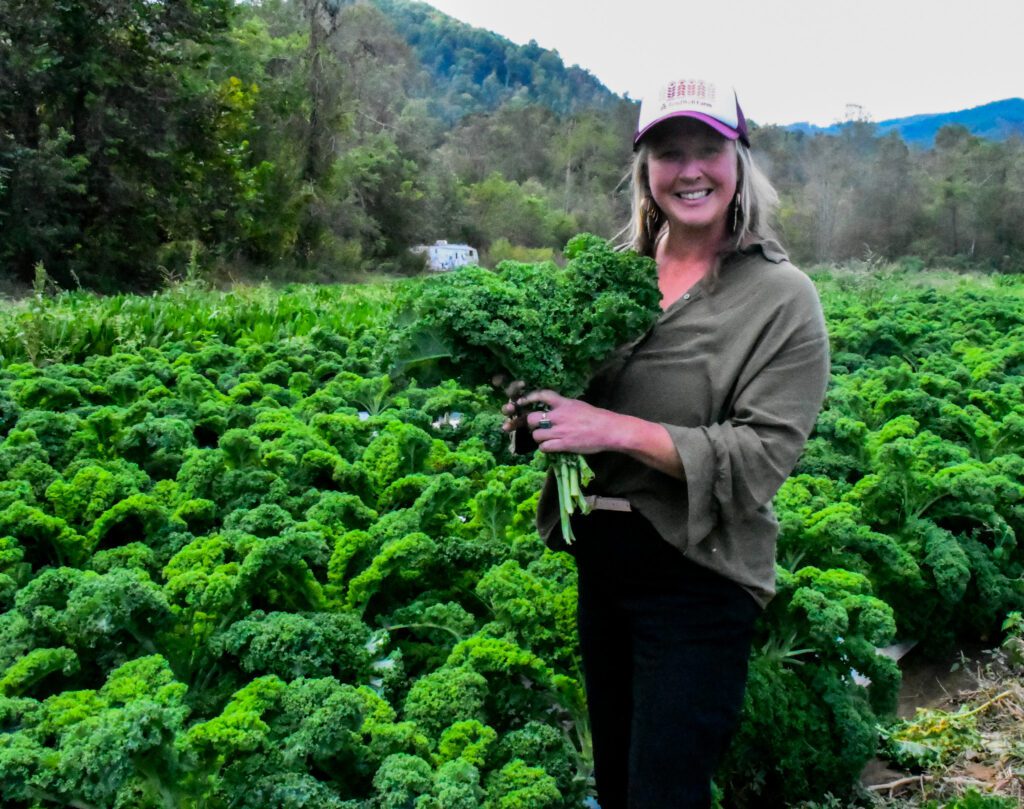

Farmer-school district relationships
Local food procurement in schools is all about relationship building.
Suzi Palladino, Growing Minds program coordinator with ASAP
Without strong farmer-school district relationships, it’s often difficult for school districts to determine what eligible farms are available in their area, what products they’re selling, and how they could best work together. On the other hand, it can be difficult for farmers to know how to package their products to best meet the needs of schools.
ASAP has relationships with more than 800 farmers across western North Carolina and plays a key role as a convenor and connector in farmer-school district relationships. According to Palladino, a lot of this work involves listening, asking questions, and then match-making to find the right fit for both the school nutrition director and the farmer.
“What’s on the menu in the schools? What are some products within our region that are being grown by local farmers that meet the state regulations and have an interest in selling to schools?” she said.
Through a grant from the USDA, the North Carolina Department of Public Instruction (DPI) has contracted with Gary Gay, a retired director from the state Department of Agriculture & Marketing Services, and Cindy Marion, a retired school nutrition director, to provide technical assistance and foster connections between local farmers and school districts.
Alison Francis, school nutrition director for Haywood County Schools, said Gay and Marion’s services have been especially helpful for new school nutrition directors who may not be familiar with how to purchase local food. They meet one-on-one with directors and share best practices, bid documents, and lists of farmers in the area.
While working alongside Gay and Marion at ASAP’s Business of Farming Conference, Francis recalled that they met several farmers who didn’t know that schools were a possible outlet for their products. Searcy, from Charlene’s Garden, was one of the farmers who met Gay and Marion at that conference. They introduced him to Jennifer Peeler, school nutrition director for Polk County Schools.
“She did a farm tour with us, we showed her around everything and went over what she thought she could use,” said Searcy. He now sells several boxes of tomatoes to Polk County Schools every other week.
Without technical assistance from organizations like ASAP or DPI, the onus often falls on school nutrition directors to connect with local farmers themselves. In Craven County Schools, Weyand described the time-intensive process she has used to build farmer relationships in the past.
“I literally started with the phone book, looking through and Googling ‘local farms that have chicken,’ … and then picking up the phone and literally calling,” she said. “It took 10 tries sometimes to get someone on the phone… so I have to be so diligent if I really want to develop this relationship.”

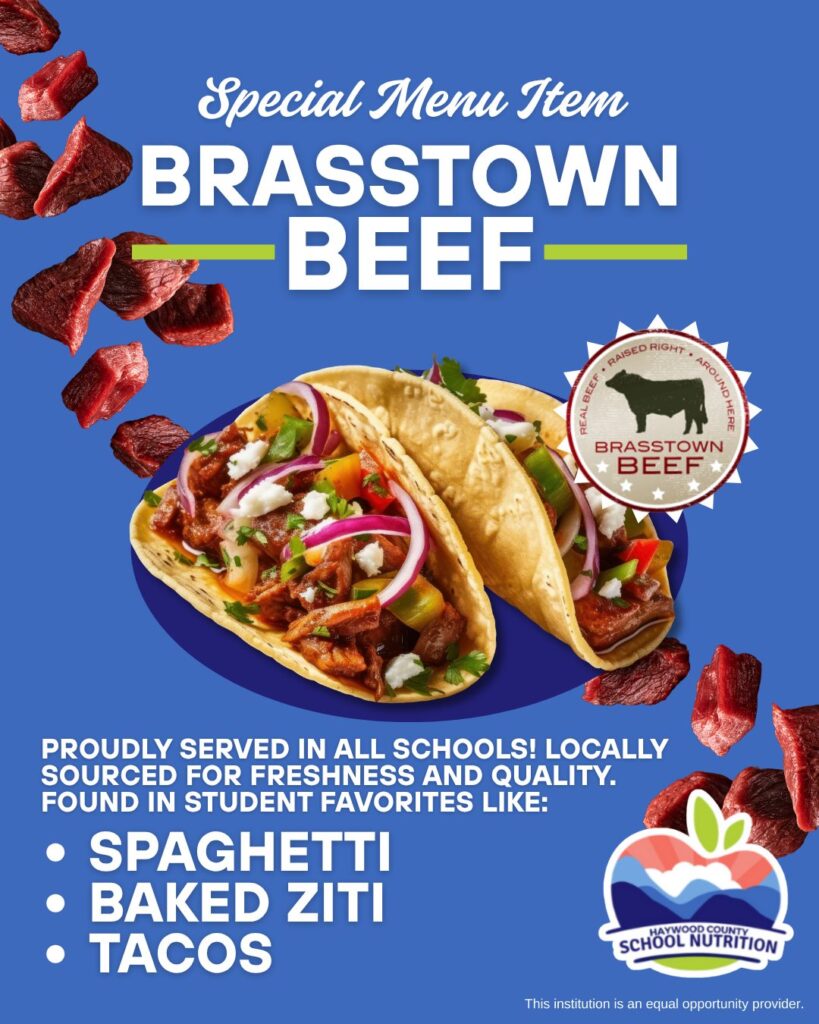

GAP certification
“I think our biggest obstacle over the years is just having folks that are GAP certified to purchase from,” said Francis in Haywood County Schools.
Although there are no federal GAP audit requirements, in North Carolina, farmers who want to sell their products to schools must have a GAP certification. This involves a voluntary audit to verify that fruits and vegetables are produced, packed, handled, and stored to minimize food safety risks. The certification process can be time-intensive and expensive — farmers may need to purchase new equipment, and the average cost of a GAP audit in North Carolina is roughly $1,000.
“A lot of farmers want to participate, but then when we tell them they have to have GAP certification and $2 million in liability insurance, they’re like, ‘Oh, maybe we don’t want to do that,’” said Francis, adding that it is especially difficult for smaller farms that may not be able to do as much business with the school district to justify the costs of GAP certification.
Although groups like ASAP and NC State Extension offer technical assistance to help farmers navigate the GAP certification process and access financial support, Palladino said farmers often don’t have the capacity to complete the process.
“For farmers who work tirelessly throughout the year, to add another process like getting GAP certified can be a real barrier,” she said. “(Appalachia is) a very community-oriented region, and the desire can be there, but carving out the time to get that certification to then be legally able to sell to schools is a real challenge for farmers.”
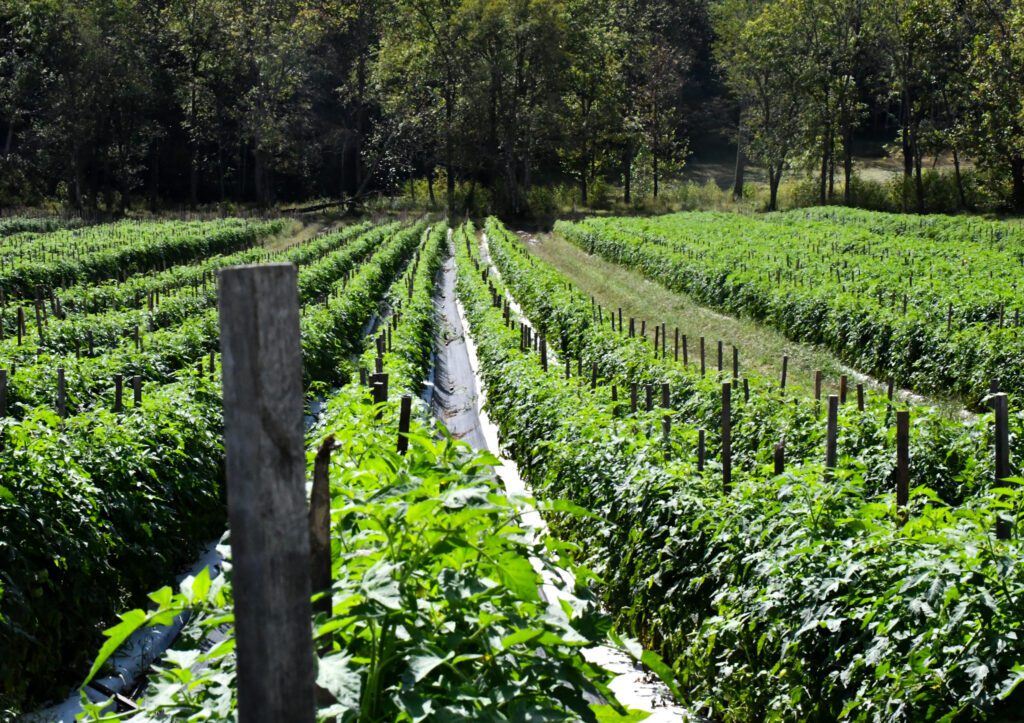
School nutrition staff capacity
Once a school nutrition director has identified a GAP-certified farm to purchase from, there are complex procurement regulations to navigate. Establishing new procurement processes to purchase local products can require more time and expertise than purchasing through existing vendors.
Staff shortages and staff turnover, combined with all of the other responsibilities school nutrition staff have, can leave school nutrition directors with little capacity to engage in local purchasing efforts. In SNA’s fall 2024 national survey of school nutrition directors, 88% of respondents reported challenges with staff shortages.
I’ve heard a lot from folks that there’s just a lot of turnover, and sometimes you just need to do the quick and easy thing, because that’s what you have to do to get food out to the kids in the cafeteria.
— Suzi Palladino, Growing Minds program coordinator with ASAP
Additional staff capacity or technical assistance is often needed to begin purchasing local food — but once a district starts, Palladino has seen success in the sustainability of those efforts.
“For the school nutrition directors that are doing local food procurement, they are going above and beyond. And as they sort of get over that hump, I’m seeing that it’s integrated into their programming in a seamless way,” she said. “But it’s the getting over the hump part that I think is the biggest barrier.”

Logistics
Finally, determining how to transport and store local products can also pose a challenge. Smaller farms may not have delivery trucks, while school districts may not have adequate transportation or storage facilities.
School districts with a central warehouse can often more easily partner with small farms. Instead of making multiple deliveries to schools, farmers can drop off their products at one location. The warehouse also allows districts to stock up on supplies for later use.
In Haywood County Schools, for example, a central warehouse with a refrigerator, freezer, and dry storage room makes it easy for local farms to drop their products off to a single location. Then, the warehouse manager makes deliveries to individual schools in the district.
“But there’s a lot of districts that don’t have that option available, and that can make it a lot harder,” said Francis.
In Polk County Schools, a central warehouse allows Charlene’s Garden to drop off tomatoes to a single location, making it much easier for Searcy to work with the district.
“People talk about working with schools and they kind of raise their eyebrows at it like, ‘Good luck with it,’ but it’s been really, really straightforward and simple for us,” he said.
Resources
- NC Farm To School Program, operated by the N.C. Department of Agriculture & Consumer Services.
- Farm to School Coalition of NC, which brings together farm to school stakeholders to expand and strengthen farm to school initiatives.
- USDA Farm to School grants: A request for applications for federal farm to school grants is now open through Dec. 5, 2025. The grant program aims to improve access to local foods through “comprehensive farm to Child Nutrition Program programming that includes local sourcing and agricultural education efforts.” It will fund projects ranging from $100,000 to $500,000 for a total of up to $18 million.
- Procuring Local Foods for Child Nutrition Programs: This 100+ page document is the USDA’s premier resource for purchasing local food. Note that the section on geographic preference is out of date.
- Other USDA Resources:
Recommended reading

